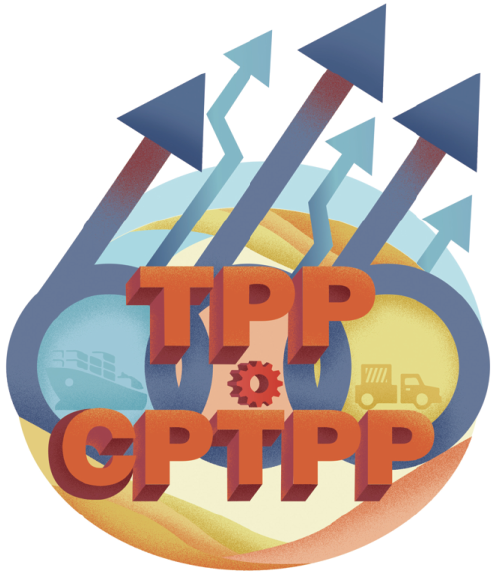CPTPP a chance for China to further integrate into Asia-Pacific

China's willingness to join the Comprehensive and Progressive Trans-Pacific Partnership has taken many by surprise, and its entry into the CPTPP, if realized, will generate many new reactions for regional trade.
The original Trans-Pacific Partnership, initiated by former US president Barack Obama, was all but annulled after US President Donald Trump pulled Washington out of the agreement in January 2017. Under the Obama administration, the US had spearheaded the TPP for several years since 2009 and many negotiating rounds. Trump's decision to withdraw the United States from the TPP was a setback for the rest of the Asia-Pacific members that were part of the deal.
However, the remaining members came together to carry the pact forward and it was renamed as the CPTPP. The agreement became effective from Dec 30, 2018. While the original TPP had 12 member countries, the CPTPP has eleven, after the US' exit. They are Australia, Brunei, Canada, Chile, Japan, New Zealand, Peru, Singapore, Malaysia, Mexico and Vietnam. All the members are also part of the Asia-Pacific Economic Cooperation.
China had reservations about the TPP when it was being negotiated, as it viewed the TPP as an attempt by the US to develop an anti-China trade and economic grouping in the region. The TPP member states included several US military allies and partners. China also felt the template of the TPP, and its contents, which were closely aligned to standard US free trade agreements, would make the deal very difficult for China to join.
The TPP's focus on several modern new-generation trade issues, such as treatment of state-owned enterprises, liberal cross-border intellectual property rules, e-commerce and cross-border data flows, labor and environment, required members to extensively amend domestic rules and regulations on these subjects. For China, that would have been difficult, as it would have meant exhaustive changes in many domestic policies. But there was also the view that if China decided to join the TPP, the agreement might give it the opportunity of reforming its economic policies substantively, like the way joining the World Trade Organization had.
The context today is different. The threat of the CPTPP being an anti-China alliance is much less with the US no more a part of it. There are several members in the CPTPP with whom China has had difficult political relations. They include Canada, Japan, Australia and Vietnam. However, they are all part of the APEC, along with China.
Similarly, Japan, Australia and Vietnam are also part of the recently concluded Regional Comprehensive Economic Partnership agreement. Several other member states of the original TPP-Brunei, New Zealand, Singapore, Malaysia-are also part of the RCEP.
Moreover, the CPTPP continues to remain an agreement comprising APEC member economies. China, therefore, will not be an "outsider" to the CPTPP. It will, however, need to negotiate its terms of entry with the rest of the members.
There is also the possibility of the US looking to rejoin the CPTPP. And since US president-elect Joe Biden played a particularly active role as US vice-president in the TPP negotiations, his administration is expected to move away from Trump's vision of looking at trade relations bilaterally, and is expected to prefer a more regional context in viewing trade. If Biden decides to join the CPTPP, and is also keen on stabilizing trade ties with China, then he should not object to China's entry into the CPTPP.
If both the US and China join the CPTPP, it would mean most of the APEC member economies becoming part of the agreement. With the two largest economies of the Asia-Pacific and the world joining the CPTPP, the partnership agreement would become the stepping stone to the growth of an Asia-Pacific free trade agreement. Over time, it would encourage other APEC members to join the grouping. More non-APEC members, such as the United Kingdom, might also be inclined to join it in the future.
However, if both the US and China join the CPTPP, and it becomes the world's largest free trade agreement, then the RCEP would recede in significance. A more modern, contemporary and ambitious trade agreement like the CPTPP, comprising both the US and China, would lead to common members of the RCEP and the CPTPP, sensing more economic benefits in committing to the RCEP. That would mean a setback for the ASEAN-centric economic order in the region which has been the key driver of the RCEP. Yet it would, at the same time, mean a greater sanctity for a more economically integrated Asia-Pacific region.
The views don't necessarily reflect those of China Daily.

The author is a senior research fellow and Research Lead (trade and economics) at the Institute of South Asian Studies in the National University of Singapore.





















